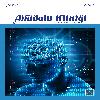Ailelerin Sarsılmış Bebek Sendromu Hakkında Bilgi Düzeyi
çocuk istismarı, sarsılmış bebek, çocuk
Families Knowledge Level About Shaken Baby Syndrome
child abuse, shaking baby, child,
___
- 1-Bonnier C, Nassogne MC, Saint-Martin C, Mesples B, Kadhim H, Sébire G. Neuroimaging of intraparenchymal lesions predicts outcome in shaken baby syndrome. Pediatrics 2003 ;112:808-14.
- 2-Şahin F, Taşar MA. Sarsılmış bebek sendromu ve önleme programları. Turk Pediatri Ars 2012;47:150-6.
- 3-Utsunomiya H. Diffusion MRI abnormalities in pediatric neurological disorders. Brain Dev 2011 ;33:235-42.
- 4-Vincent AL, Kelly P. Retinal haemorrhages in inflicted traumatic brain injury: the ophthalmologist in court. Clin Exp Ophthalmology 2010 ;38:521-32.
- 5-Togioka BM, Arnold MA, Bathurst MA, Ziegfeld SM, Nabaweesi R, Colombani PM,et al. Retinal hemorrhages and shaken baby syndrome: an evidence-based review. J Emerg Med. 2009 ;37:98-106.
- 6-Macdonald SL, Helfrich CA. Shaken Baby Syndrome. Occupational therapy in mental health 2001;16:111-25.
- 7-King WJ, MacKay M, Sirnick A; Canadian Shaken Baby Study Group. Shaken baby syndrome in Canada: clinical characteristics and outcomes of hospital cases. CMAJ. 2003 ;168:155-9.
- 8-Gehricke JG, Potkin SG, Leslie FM, Loughlin SE, Whalen CK, Jamner LD,et al. Nicotine-induced brain metabolism associated with anger provocation. Behavioral and brain functions 2009 ;5:19.
- 9-Van Der Wal MF, Van Den Boom DC, Pauw-Plomp H, De Jonge GA. Mothers' reports of infant crying and soothing in a multicultural population. Arch Dis Child. 1998;79:312-7
- 10-Cansever Z, Taşar MA, Şahin F, Çamurdan AD, Beyazoda U. Ailelerin sarsılmış bebek sendromu konusundaki bilgi ve tutumları. Gazi Medical Journal 2012;23:39-45.
- 11-Abdulrazzaq YM, Kendi AA, Nagelkerke N. Soothing methods used to calm a baby in an Arab country. Acta Paediatr 2009 ;98:392-6.
- 12-Kesler H, Dias MS, Shaffer M, Rottmund C, Cappos K, Thomas NJ. Demographics of abusive head trauma in the Commonwealth of Pennsylvania. Journal of Neurosurgery: Pediatrics 2008 May;1:351-6.
- 13-Fanconi M, Lips U. Shaken baby syndrome in Switzerland: results of a prospective follow-up study, 2002-2007. Eur J Pediatr. 2010 ;169:1023-8.
- 14-Dubowitz H, Bennett S. Physical abuse and neglect of children. The Lancet 2007;36h9:1891-9.
- 15-Yağmur F, Asil H, Per H, Aslan D, Abdülhakim C. Sarsılmış bebek sendromu ve 3 olgu sunumu. Adli Tıp Dergisi 2010;24:42-9.
- 16-Taşar MA, Şahin F, Polat S, İlhan M, Çamurdan A, Dallar Y, et al. Sarsılmış bebek sendromu önleme programının uzun dönem sonuçları: Türkiye deneyimi.Turk Pediatri Ars 2014;49: 203-9.
- 17-Foley S, Kovács Z, Rose J, Lamb R, Tolliday F, Simons-Coghill M, et al. International collaboration on prevention of shaken baby syndrome - an ongoing project/intervention. Paediatr Int Child Health. 2013 ;33:233-8.
- 18-Dias MS, Smith K, DeGuehery K, Mazur P, Li V, Shaffer ML. Preventing abusive head trauma among infants and young children: a hospital-based, parent education program. Pediatrics 2005 ;115:470-7.
- ISSN: 2149-5254
- Yayın Aralığı: Yılda 3 Sayı
- Başlangıç: 1933
- Yayıncı: Hayat Sağlık ve Sosyal Hizmetler Vakfı
Pulmoner Aspergillomada Uzun Dönem Antifungal Tedavi Cerrahiye Alternatif Olabilir mi?
Akif TURNA, Ezel ERSEN, İsmail SARBAY, Mehlika İŞCAN, Merve EKİNCİ, H. Volkan KARA
Nursel ARICI, Enes ÖZKAN, Selim ARICI, Tuğba HALİLOĞLU ÖZKAN
Mide Metastazı Yapan Malign Melanom
Ülkü KÜÇÜK, Coşkun YILDIZ, Samir ABDULLAZADE, Sümeyye EKMEKÇİ, Talya AKATA AKINCIOĞLU
Hodgkin Lenfomanın Başlangıç Bulgusu Olarak İmmün Trombositopeni
Derya ARSLAN, Salih GÜLER, Elif H. AKTEKİN, Sibel B. ŞAHİN UYAR, Nazmi ŞİMŞEK
Ailelerin Sarsılmış Bebek Sendromuna Dair Bilgi Düzeyi
Yusuf ÇELİK, Ebru GÜNGÖR, Gülsen MERAL, Kübra ZENGİN, Hatice KAYMAZ, Verda TUNALIGİL, Ruveyda YAŞAR, Tuğba KILINÇ, Secda TAHİROĞLU, Ecenur YAPANER
Akciğer Mast Hücre Davranışının Migren Sıçan Modelinde İncelenişi: Migren Baş Ağrısı İçin Çıkarımlar
Ailelerin Sarsılmış Bebek Sendromu Hakkında Bilgi Düzeyi
Gülsen Meral, Yusuf Çelik, Verda Tunaligil, Ruveyda Yaşar, Tuğba Kılınç, Ebru Güngör, Secda Tahiroğlu, Ecenur Yapaner, Kübra Zengin, Hatice KAYMAZ
Mülteci ve Yerleşik Ergenlerde Depresyona Yatkınlık ve Algılanan Sosyal Destek Düzeyleri
Ömer ATAÇ, Sena DEMİR, Hilal AKBAY, Arzu DOPRAL, Büşra Sultan ATEŞ, Sayfullah AHMEDZAİ, Osman E. HAYRAN
